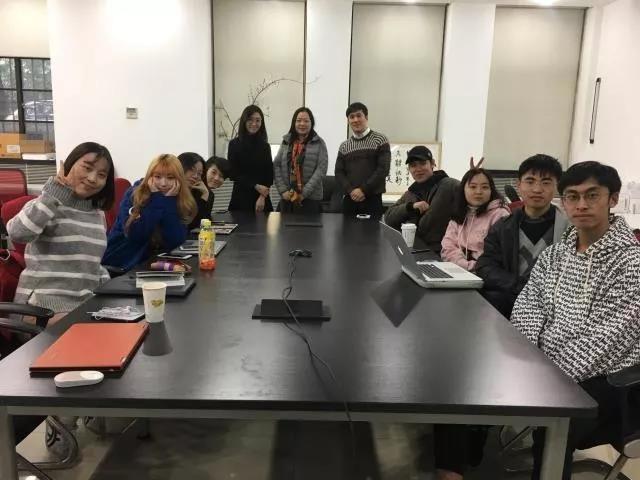
"Hello, Doctor Cao and dear students, this is Seoul National University in Korea!"
"Hello, Professor Jiang and dear students, this is Tsinghua University! Nice to meet you guys again!”
Every Monday afternoon, in the Smart Media Demonstration Lab, located on the first floor of School of Journalism and Communication, Tsinghua University, there is a busy scene in the Global Communication Cross-cultural Explorations in East Asia course. A transnational live video connection brings together elite students from China and Korea to facilitate a transcultural conversation between the two countries by letting the students talk to each other and discuss various topics.
This course was created in 2012 and links about 20 students from Tsinghua and 30 students from Seoul. The course director at Seoul National University is Professor Kang Myungkoo, who is a famous cultural communication research scholar and also the leader of Asia Institute in Korea. The course director at Tsinghua University now is Associate Professor Shule Cao. Professors Anbin Shi and Zhenzhi Guo, past leaders of the course, cooperate to teach the bi-national students.
Much of the course content consists of lectures. Common lectures include academic speeches like an introduction to transcultural communication, an overview of Chinese media, modernity and post-modernity of Asia society. There are reciprocal roundtable forums consisting of Korean entrepreneurs in Beijing and Chinese entrepreneurs in Korea, Korean correspondents in Beijing and Chinese correspondents in Korea, and Korean students in Beijing and Chinese students in Korea. After each lecture, students from both universities further discuss issues along with the topic covered by the lecturer.
Although this is a small-size course, the lecturers are heavyweights, including some celebrities. For example, Kwon Young-se, the former Korean ambassador to China, andTaiwei Zhang, the director of a world-famous TV series My Love From the Star, stood on the class stage and gave a speech to the students.
As a selective course designed for the whole university, the students who choose this course at Tsinghua University come from different disciplines. About half of them are from engineering schools. The interdisciplinary students bring different methodologies and thoughts to the humanities and social science research areas and also learn how to explore the cross-cultural issues they are curious about by learning both qualitative and quantitative social science research methods and bridging the gaps between different disciplinary backgrounds.
The comparative research groups consisting of both Chinese and Korean students will conduct joint research in four areas: individualism, materialism, traditional culture and gender studies. Past research topics students include comparative study on the modernization of traditional residences in Korea and China, comparative study on individualism and collectivism among Chinese and Korean youths, China and Korea’s different ways of presenting traditional culture, and consumption habits among youths in each nation.
The course also is popular with international exchange students at both Tsinghua University and Seoul National University. They have included students from the United States, Canada, Germany, France, Holland, Australia, Finland and many other countries. They are curious aboutAsian culture and share ideas from their own cultural perspectives, which provides the class with diverse angles to evaluate cross-cultural issues.
Tsinghua University aims to be more international, innovative and humanistic in the new century. The course, Global Communication Cross-cultural Explorations in East Asia, not only wants to broaden students’ international vision, but also prompt academic conversations among different cultures through a new multimedia teaching model. The new model demonstrates the growing internationalization of the course structure at Tsinghua University. (By Liu Bicheng)

